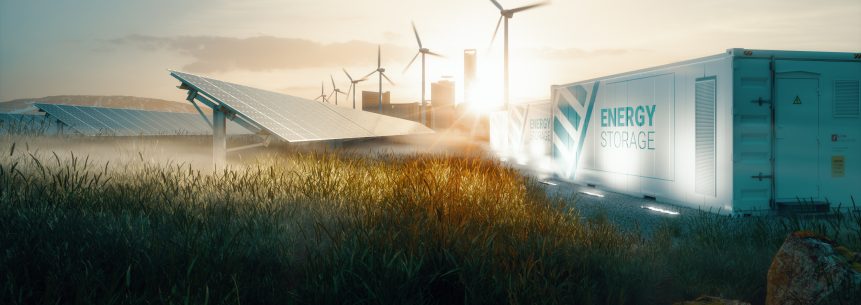
BACK TO THE FUTURE
Greg Thorpe | 31st October 2022Some thoughts from Greg Thorpe, Executive Director, Oakley Greenwood
The label ‘back to the future’ has become more common as a description of the latest developments in the electricity sector. In the recent past it has been decided the current arrangements for investment in the NEM are not fit for purpose. Ministers have effectively killed off the option of a market wide capacity mechanism and are progressively taking control of design of its replacement. Processes for the planning of major generation investments and retirements and development of transmission and potentially direct retailing are being overhauled with increased central control.
Proposed changes and recreating government entities is certainly worthy of the ‘back to the future’ label. But here is a forecast of what might follow and is also worthy of that label.
A little history as to why this is so.
Between the 1960s, when the first interconnections between the power grids of states were developed and 1990s when the NEM was developed and launched, wholesale power was bought and sold between the state utilities. At the time the NEM started only 3 states were interconnected – NSW incorporating the electricity network of the ACT, Victoria and South Australia. Exchanges were conducted under the Interconnection Operation Agreement (IOA). The IOA was primarily about so-called opportunity interchange where the interconnected states identified opportunities to reduce high cost generation in one state by using lower cost generation from another state. The exchanges took place at the mid-point between the operating costs of the buyer and seller so that each state benefited equally. The IOA also contained a little recognized capacity sufficiency provision that required each of the states to have built sufficient capacity to supply their own demand in order to prevent free-riding, although the states could, and in a limited number of instances did, agree to pay for use of capacity in another state to meet this requirement. Queensland and Tasmania interconnected after the NEM started and therefore never traded with other states under the terms of the IOA.
The IOA worked well at first but by the time it was replaced it was failing because it was designed for opportunity trading back and forth between the states and sellers received the average of cost of production between buyers and sellers. Verification of these costs was problematic, and the fifty-fifty split was fixed. Costs could be changed but only slowly and had to reflect the assessed economic value of water in hydro storages, coal stocks and take or pay gas and coal agreements. In practice exchanges of capacity rights was limited to emergency situations and never planned as a substitute for investment. There was increasing acceptance that these arrangements did not reflect economic value. The Hilmer review of competition in the early 1990s concluded there was a lot of unrealized value and hence the NEM was born, albeit with some very significant competition payments to induce states to participate.
The vision of the NEM was that state boundaries would become irrelevant to where supply side facilities were constructed and how they were operated, and pricing would better reflect economic value. Both the supply side and demand side were to be competitive, and parties were to be guaranteed access to networks to ply their wares. This vision was realized for a while, not perfectly, but workably.
The status quo
So where are we now? Changes in technology have meant that the NEM’s mechanisms to manage power system security (i.e. how the assets that are available are operated second by second) need to change. AEMO, AEMC and ESB are racing to fill these gaps at present, stretching arrangements for governance and back-up intervention and pricing mechanisms to the limit – not always in time, but a work in progress.
New and amended arrangements for detailed technical matters such as for fast frequency response, performance of generator governors, inclusion of inverter based plant and storage and direct management of inertia are being developed or have been introduced. Well-functioning arrangements for these mechanisms are essential for any power system under any arrangement for trading.
Enhanced arrangements for network access and pricing of network congestion are also being developed or have been introduced. These are another attempt to introduce market mechanisms to manage congestion during day-to-day operation within the regional design of the NEM – noting there have been a number of attempts over the years, but none have been implemented – think Optional Firm Access and the CSP/CSC trial.
Changes are also being developed for matters related to investment in transmission and generation with rapidly evolving economic and technical characteristics not to mention objectives previously regarded as externalities including management of CO2-e emissions.
The changes now proposed are premised on greater central decision making – effectively by government. State governments have created new organisations to centrally plan and coordinate Renewable Energy Zones and associated transmission to varying degrees. So far these are planning organisations and are not involved in day-to-day operation. But it is a short step for them to begin to exercise dispatch bidding rights or potentially physical dispatch rights.
Dispatch rights will at a minimum give the new organisations the role to bid into AEMO’s dispatch process and the price in those bids will be used by AEMO to determine dispatch levels and resultant flows between the states, as it does today.
It is not a stretch to think that this is where we are heading, and it is truly back to the future. The new entities will do the job of the pre-NEM state utilities and will in effect be trading with each other again. There will be differences of detail of course.
A more dramatic change would be for the new organisations to exercise physical dispatch rights – that is the organisations themselves will determine the output of generators including how much to dispatch to meet any interstate energy contracts. In this situation flows between the states will not be consequential as they are under the NEM, but, scheduled in the same way they are in a number of markets internationally, especially where there are different markets on either side of a border. These markets used to marvel at the single coordinated approach in the NEM and are moving closer to common rules and additional intra-day markets to break down barriers to efficient dispatch just as the NEM might be moving away.
What is at stake?
A few comments about some well-trodden matters as thought starters, in no particular order:
- Certainty for investment: Poor at present but may well be re-established after a time.
- Competition: It depends whether you believe that over the longer-term healthy competition is better than sound central management and which is more likely to persist over time.
- Risk allocation: Central management means government and government risk means consumer risk and cost.
- Capital allocation: Similarly, central decision-making means government liability which means less capital for other government priorities.
- Compatibility with government policy such as for climate change: My personal view is if the policy is stable and clear, the NEM, the IOA or any other arrangement under central or competitive regimes can deliver – but the devil is in the detail.
- Regulatory duplication: Different regulatory arrangements in different parts of the country lead to higher costs and higher consumer prices. One thing a single NEM does have is a single rule book and regulatory regime, state-based arrangements are trending in a similar direction to each other — surely these can be brought together (NEM Mk2?).
- Dispatch efficiency. There is an obvious benefit from efficient short-term dispatch and sharing of short-term reserves. The current AEMO process does that. We can have efficient national dispatch under most alternative designs – if we choose.
So, my message is that while the NEM is clearly being unwound and this is not an original thought, I have seen one possible future – it is where we came from. This is not an argument to not do it (or agreement that it is a good idea), but I am saying be careful about how it is done and what you wish for, there was a reason the NEM was created.



